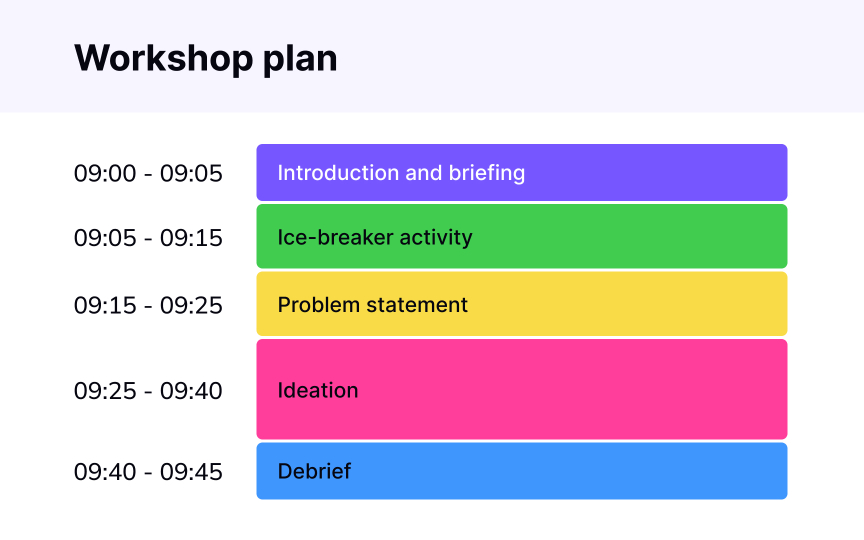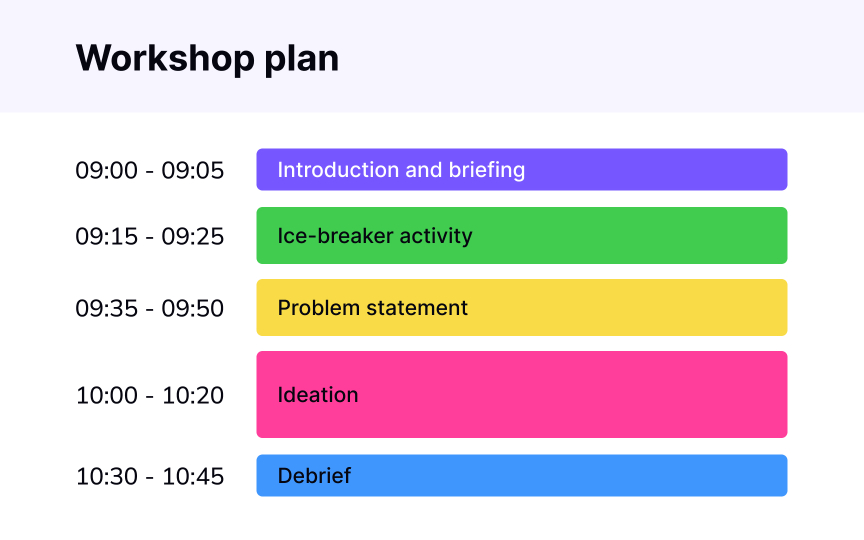Common remote workshop mistakes
One of the biggest mistakes a workshop facilitator can make is not planning some buffer time for unexpected activities like internet issues or technology troubles. Make sure to plan some buffer time so delays don't get you off track.
Here are some other things to look out for when planning a remote workshop:
- Underestimating the learning curve of online collaboration tools. Some people find remote workshops uncomfortable, and it takes them longer to learn new tools. Show people how to use the selected tool and encourage them to play around with it for a few minutes at the beginning of the workshop. You may even send instructions or a video tutorial in an invitation email, so participants have time before the workshop to get familiar with the tool.
- Limitations of an online format. Firstly, a remote format makes it harder to see participants’ body language, and notice that some people feel shy and tense, even if they have something to say. When it's time to make a decision and move forward, the facilitator should find a way to check on everyone's opinions and concerns. Secondly, some offline activities like co-design sessions may require the use of physical materials like Lego and Play-Doh. By facilitating such workshops online, you are limited to using post-its and sketching.
Pro Tip: Remote workshops are always more tiring than in-person workshops. So, divide activities into shorter sessions and allow for breaks.



